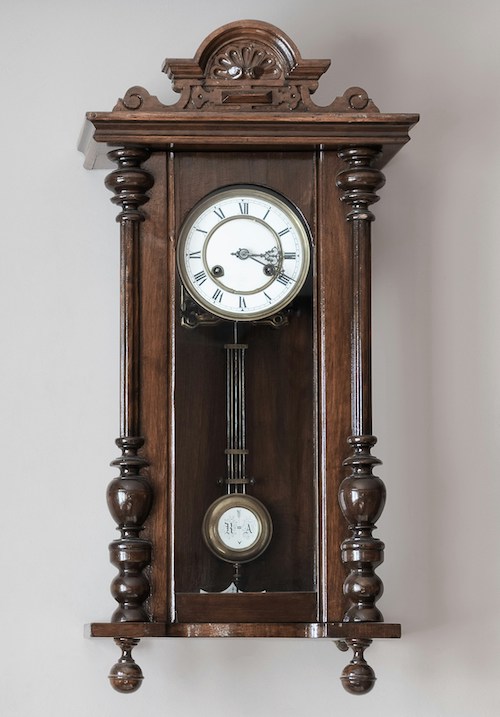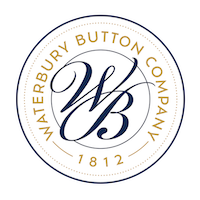Home>About
About Us
Our Mission is to honor the Legacy of American-made Craftsmanship through the creation of quality pieces with the finest level of detail and deep-rooted meaning.
We operate out of a 40k sq ft facility in Cheshire, CT, just down the road from our original location in our namesake Waterbury.
We have in-house stamping, plating, and assembly capabilities and are Berry Amendment compliant.
In addition to our inventory library of over 40k+ image tools, we have new tool production capabilities to meet your needs.
Over 200 Years of History
1
1812
The United States of America goes to war with England. Soldiers and sailors needed uniform buttons, but England would no longer supply them. Near Waterbury, CT, Aaron Benedict bought up every brass kettle, pan and pot he could find and established a rolling mill to make buttons for the US armed forces. When Benedict ran out of brass, he turned to pewter.

2
From 1824
The company gained a partner with Gordon Burnham and was known at times as Benedict & Coe, Benedict & Burnham and Benedict & Burnham Manufacturing Co. During this time, the company increased both its production volume and variety as it produced copper and copper alloys, door handles, furniture knobs, safety pins, rivets, bolt hinges, lamp burners, insulated electric wire and copper wire for telegraph lines.

3
1846
In 1846 The Benedict & Burnham Manufacturing Company and a company called Brown & Elton jointly organized the American Pin Company. They later spun off two divisions into separate companies: The Waterbury Button Company (1849), and the Waterbury Clock Company (1857). The Waterbury Clock was in business from 1857-1944 where it was one of the largest producers of clocks domestically, producing millions per year. Waterbury Clock was purchased by US Time Corp in 1944, part of what is known as Timex Group today.

4
1849
The plastics industry is born with Shellac and The Waterbury Button Company pioneers making products out of shellac, the first plastic material molded in this country. The company uses a hand press to produce plastic buttons, checkers and dominoes. It continues to expand its line of metal goods as well.

5
1861-1865
The United States are ripped asunder by Civil War, but Union troops and Confederate troops wear Waterbury buttons. The South uses intermediaries in Europe to obtain Waterbury buttons for its troops.

6
1870
The Waterbury Button Company undertakes production of a new material. Lustrous buttons made of celluloid fill a fashion trend.

7
1890’s
The company rides a toy craze of the “Gay ’90s”, when an intricate metal toy, the “Climbing Monkey”, becomes so popular that the company must turn out 3 million a year.

8
1912
When the Titanic sailed in 1912, the crew of the White Star Line wore Waterbury buttons on their double-breasted coats.

9
1917
The United States enters World War I and The Waterbury Button Company becomes the primary supplier of uniform buttons for the armed forces.

10
1920s
The company is heavily involved in the toy business, manufacturing aluminum toys such as airplanes, candy banks, zeppelins and tractors. It also makes and sells the “Oracle V” radio under its own name.

11
1925
The Waterbury Button Company is among the first manufacturers to mold a new plastic called Bakelite into buttons. Bakelite proves to be ideal for electrical parts, and the company molds articles for the electrical industry.
12
1929
Operating under the name of “Multiplane Aircraft Corp.” The Waterbury Button Company built an experimental aircraft called the “Multiplane”. It was powered by a Curtis Challenger engine manufactured by Curtiss Aeroplane & Motor Company.

13
1938
After extensive research and engineering, The Waterbury Button Company develops the first optically correct injection-molded plastic lens. The discovery proves fortuitous, for more than 500,000 of these lenses are produced and used in U.S. Navy gas masks during World War II.

14
1939
“Gone With The Wind”, one of the most eagerly awaited and storied Hollywood films in history, opens in Atlanta, Georgia. Actors playing Confederate and Union solders wear costumes bearing authentic buttons specially produced for the epic movie by The Waterbury Button Company.

15
1941-1945
Wartime demands lead to rapid expansion. The Waterbury Button Company makes a range of products for the Allied forces, from buttons to bomb fuses. The company changes its name to Waterbury Companies, Inc., to reflect its diversified product lines.

16
1945
New techniques in powdered metallurgy led the company into sintered products. Among the first products are the World War II Victory Medal and the Merchant Marine Medal.

17
1946
As the United State exhales after World War II, the company begins pressing vinyl phonograph records for children.

18
1948
Laundry tubs, breadboxes, lamp shades and ice containers are among the many antibiotic products the company begins to make with fiberglass-reinforced plastics.
19
1950
With the introduction of its “Dialer-Magnifier” letter opener, the company breaks into the advertising specialty field, a strong line to this day.

20
1960-1991
Expansion and acquisitions lead the Waterbury Companies into the fields of air filtration and freshening, pest control and cleaning products.
21
1994
The Waterbury Companies acquire the non-realty of the Ball & Socket Manufacturing Company, formerly the Cheshire Button Company. Ball & Socket’s major presence in the mid- and low-fashion markets ushers Waterbury buttons into those markets.

22
1997
Hollywood calls again: The crew of the ill-fated R.M.S. Titanic, part of the White Star Line, wore Waterbury buttons. The company is tapped to make replicas for the costumes worn by actors playing crew members in the blockbuster movie, “Titanic”.

23
1999
When professional golfer Payne Stewart is killed in an airplane crash, Waterbury Companies’ button division issues a commemorative pin in his honor. The pin is based on the blazer button Waterbury Companies’ made for Stewart’s sportswear line.
24
2000
The button business of the Waterbury Companies was purchased by OGS Technologies, Inc., which promptly readopts the name, The Waterbury Button Company.

25
2022
OGS Technologies, Inc. was purchased by new ownership to honor the legacy and champion the next chapter of the brand.



